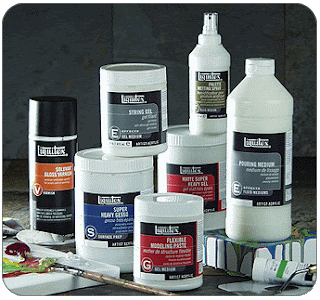As I have said in other article, there are 8 main types of artist paint brushes that are used with acrylics. Each one is specially intended for different uses. However, this is only a guide. You use them whichever way you like whilst you get a bit of experience with them. It's what makes you feel comfortable that's best for you and your painting...
So now let's find out what each brush is meant for!

good for: sketching, outlining, detailed work, controlled washes, filling in small areas. creates thin to thick lines- thin at the tip, becoming wider the more its pressed down.. used with thinned paint rather than thick paint.

narrower than the round paintbrush. has sharply pointed tip.
good for: fine details and lines. delicate areas, spotting and retouching.

square end, with medium to long hairs.
good for: bold strokes, washes, filling wide spaces, impasto. can use edge for fine lines, straight edges and stripes. long haired flat brushes are ideal for varnishing.

flat with edges curved inward at tip, with shortish hairs.
good for: short controlled strokes. thick, heavy color. better for working up close rather than holding the brush at a distance from the canvas.
flat and oval-shaped end with medium to long hairs.
good for: blending, soft rounded edges like flower petals. this brush is sort of a
combination of the rounds(because they can be used for detail) and flats(because they can cover more space than round).

flat with angled hairs at end.
good for: curved strokes and filling corners. can reach small areas with tip. also can be used to cover lots of space, similar to flat brushes.

flat, spread hairs.
good for: natural hairs are good for smoothing, blending and feathering. synthetic hairs are better for textural effects, clouds, and leaves on trees. for acrylic use strong and sturdy one, otherwise the hairs will clump when paint is added.

rounds, hairs shorten in length. shorter handle.
good for: details and short strokes. holds more color than you think!




